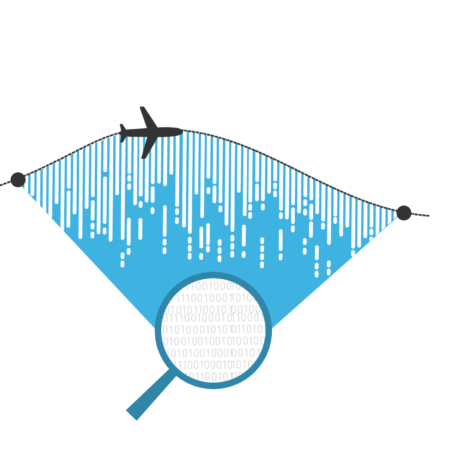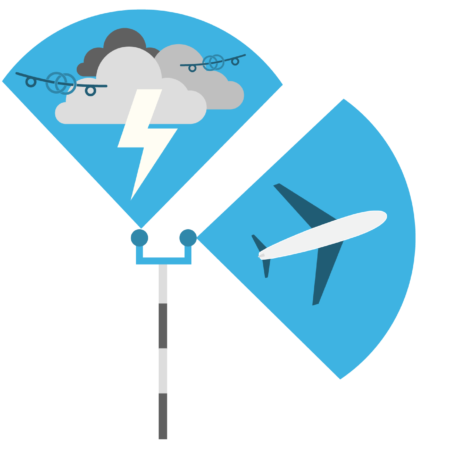
Final thematic challenge workshops were held on:
● 21 June 2021, virtual event – TC4 Economic incentives for future ATM implementation. Programme / presentations and material (zipped 3MB).
● 03 September 2021, virtual event – TC2 AI, ML and Automation. Programme / presentations (zipped 13MB).
● 09 September 2021, virtual event – TC3 Efficient provision and use of MET information in ATM. Programme / presentations and material (zipped 3MB).
● 15 September 2021, virtual event – TC1 Vulnerabilities and global security of the CNS/ATM system. Programme / presentations (zipped 4MB).
Thematic challenge 1 – Vulnerabilities and global security of the CNS/ATM system
3rd workshop: 15 September 2021, virtual event – Vulnerabilities and global security of the CNS/ATM system. Final programme. Presentations: zip file (4MB).
2nd workshop: 10 November 2020, virtual event. Final programme. Presentations: zip file (20MB).
1st workshop: 27 March 2019, Brussels, Belgium – Bringing together the ATM community and security experts to enable a more privacy-preserving, cyber-resilient, fault-tolerant and secure ATM system. Final programme. Download the presentations here (27MB).

CNS/ATM components (e.g., ADS-B, SWIM, datalink, Asterix) of the current and future air transport system present vulnerabilities that could be used to perform an ‘attack’. Further investigations are necessary to mitigate these vulnerabilities, moving towards a cyber-resilient system, fully characterising ATM data, its confidentiality, integrity and availability requirements. A better understanding of the safety-security trade-off is required. Additional security assessments for legacy systems are also needed to identify possible mitigating controls in order to improve cyber-resilience without having to replace and refit. Future systems security by design is essential: a new generation of systems architectures and applications should be explored to ensure confidentiality, cyber-resilience, fault tolerance, scalability, efficiency, flexibility and trust among data owners. Collaborative, security-related information exchange is essential to all actors in aviation. This is specially challenging in a multi-stakeholder, multi-system environment such as ATM, where confidentiality and trust are key.
Thematic challenge 2 – Data-driven trajectory prediction
4th workshop: 03 September 2021, virtual event – AI, ML and Automation. Final programme. Presentations: zip file (13MB).
3rd workshop: 25 January 2021, virtual event – Data-driven trajectory prediction. Final programme. Presentations: zip file (44MB).
2nd workshop: 02 December 2019, Athens, Greece (co-located with SIDs) – Data-driven trajectory prediction. Final programme. Presentations: zip file1 (13MB); zip file2 (5MB).
1st workshop: 06 November 2018, Barcelona, Spain – ATM stakeholders and data scientists discussing the airspace users’ needs, methodologies and benefits of improved trajectory prediction. Final programme. Presentations: zip file1 (9MB); zip file2 (8MB updated).

Fuller text here (updated December 2019)
Thematic challenge 3 – Efficient provision and use of meteorological information in ATM
4th workshop: 09 September 2021, virtual event – Efficient provision and use of MET information in ATM. Final programme. Presentations and material: zip file (3MB).
3rd workshop: 27 January 2021, virtual event – Efficient provision and use of meteorological information in ATM. Final programme. Presentations: zip file (234MB).
2nd workshop: 05 November 2019, Brussels, Belgium – Efficient provision and use of meteorological information in ATM. Final programme. Presentations: zip file (49MB).
1st workshop: 13 November 2018, Brussels, Belgium – Atmospheric scientists and ATM stakeholders shaping a more efficient provision and use of meteorological information in future aviation. Final programme. Presentations: zip file1 (10MB); zip file2 (13MB).

Thematic challenge 4 – Novel and more effective allocation markets in ATM
3rd workshop: 21 June 2021, virtual event – Economic incentives for future ATM implementation. Final programme. Presentations and material: zip file (3MB).
2nd workshop: 12 November 2019, Madrid, Spain – Novel and more effective allocation markets in ATM – the way forward. Final programme. Presentations: zip file (12MB).
1st workshop: 25 October 2018, London, UK – A range of speakers from the behavioural sciences, economics, and ATM, debating approaches to improved modelling and methods in this new interdisciplinary area. Final programme. Presentations: zip file (13MB).

This research explores the design of new allocation markets in ATM, taking into account real stakeholder behaviours. It focuses on designs such as auctions and ‘smart’ contracts for slot and trajectory allocations. It seeks to better predict the actual behaviour of stakeholders, compared with behaviours predicted by normative models, taking into account that decisions are often made in the context of uncertainty. Which mechanisms are more robust against behavioural biases and likely to reach stable and efficient solutions, equitably building on existing SESAR practices? The research will address better modelling and measurement of these effects in ATM, taking account of ‘irrational’ agents such as airline ‘cultures’. A key objective is to contribute to the development of improved tools to better manage the allocation of resources such as slots and trajectories, and incentivising behaviour that benefits the network – for example by investigating the potential of centralised markets and ‘smart’ contract enablers.


